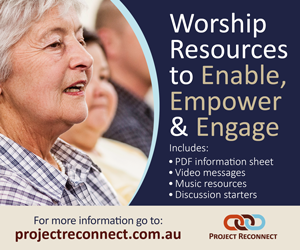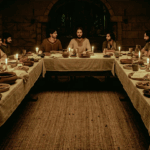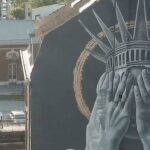In 1985, the Uniting Church made the commitment to be a multicultural church. Has the church lived up to its words? And what challenges are there for a denomination that truly embraces diversity?
The Uniting Church’s fourth Assembly meeting adopted a vision statement called ‘A Multicultural Church.’
The latter part of statement’s introduction reads, “The diversity we have in the body of Christ is God’s gift to us. Learning to understand one another and celebrate our differences is both a joyful and painful journey. We seek to be a community that is open to welcome one another as Christ has welcomed us.”
Being a multicultural church is a calling that provides benefits but comes with its challenges.
Rev. Myung Hwa Park is a former Moderator of NSW and the ACT and the current minister at Leura Uniting Church. She recalled that the 1985 Assembly’s declaration was “a courageous act.”
“This declaration gave a welcoming message for diverse cultural groups to make their new life within the UCA.”
The commitment the church made, she said, was a widespread one, with more implications than merely acknowledging cultures.
“Being a multicultural church means more than welcoming people from other cultures but a Gospel imperative; transcending cultural and other barriers,” Rev. Park said.
“Being a Multicultural Church is not a decorative statement of what we are: how many migrant congregations we have, or how many CALD ministers work in the UCA.”
“Being a Multicultural church is a missional statement of who we are; the church wants to celebrate and learn from our differences, whether cultural diversities, theological differences or different structures.”
Rev. Alimoni Taumoepeau is the Mission Enablement Team Leader for Uniting Mission and Education. At this year’s Synod meeting, he will introduce a motion calling for the church to live cross-culturally (see this issue’s news section). Rev. Taumoepeau told Insights he believed that the Uniting Church had much to gain from this approach.
“In a contemporary context, where societies are becoming increasingly diverse, having a multicultural church also helps in reaching out to and serving the broader community,” he said.
“By valuing and embracing different cultures, the church becomes a place that can truly connect and engage with people from various backgrounds. This relevance and inclusivity can attract more people to the church, contributing to its growth and expansion.”
“Living cross-culturally also requires courage and open-mindedness, as it may involve challenging preconceived notions, biases, and stereotypes. This courage can extend beyond the church walls, inspiring members to take bold actions and engage in social justice issues to impact the world around them positively.”
The ‘spectacle’ of gathering together
As the 1985’s statement’s reference to a ‘painful journey’ suggests, there are challenges to working cross-culturally.
“One of the challenges that I saw is our inward-looking approaches to it,” Rev. Park said.
“Being a Multicultural Church requires us to respond to global responses on climate, environment, race, and economy and many more issues with the people who brought the world into our midst.”
Rev. Dr Sathi Clarke has over 30 years working in various intercultural ministries in India, the United States, and now Australia.
He told Insights that churches’ intercultural work often embraced the easier aspect of the ‘spectacle’ that came with multiculturalism.
“To celebrate the spectacle of the gathering of many cultures, that’s the easy part,” he said.
“We can come together during Pentecost.”
Genuinely working together, he said, was a more difficult task beyond this ‘spectacle.’
“The difficult part is to baptise ourselves into a new way of belonging,” Rev. Dr Clarke said.
“To sift and see in each of our cultures to see the life of the world.”
“We’ve all thought the only people who should sieve their own cultures was basically western cultures.”
Rev. Dr Clarke said the task the church faced was to, “Not judge each other’s cultures, but for each of these cultures to see the way we can see the way we have been curved into parochiality.”
“It is that baptism that will see us not just be a spectacle but truly work for the world around us.”
“Western monoculture tended to judge every culture except itself,” he said.
“We have a lot of catch up to do.”
Rev. Dr Clarke told Insights he was interested in Willie James Jennings’ work regarding “how do we get away from the work of assimilation to what is a new form of joining in the spirit that gives each culture their own way to join together into this body of Christ?”
“Jennings makes the point that while identity politics calls for assertion and world Empire promotes assimilation, the Holy Spirit invites us to a new kind “of joining…a life together and of shared stories bound to a new destiny in God.”
The 1985 vision statement, A Multicultural Church can be read online at the Assembly’s website












